The 25 Fastest Production Cars in the World Right Now

The first production vehicle to crack 200 mph was the Ferrari F40. The year was 1987; immediately after that Italian stallion’s speedometer registered 201, the race to enter the 300 mph club began. In 2019, amid fervent competition between Koenigsegg, Hennessey and Bugatti, the Chiron Super Sport bested the others by a horseshoed nose, achieving a staggering 304.7 mph. In early 2020, a bevy of new hypercars was announced—several promising at least 300 mph. Then, last year, SSC North America turned a claim into reality, cementing the SSC Tuatara’s spot at number two—at least for now.
Yet a relatively new name, innovative Czinger Vehicles, and long-standing icon Gordon Murray have both gained momentum. And of course Bugatti is busy being, well, Bugatti. So, we’re updating our list of the fastest cars in the world and expanding it to show more wheeled lightning. (Three quick editor’s notes: our sole criterion is top speed, our floor for consideration is at least 218 mph and unproven manufacturer claims are denoted.) Sean Evans
More from Robb Report
Editor's Letter: Inside Robb Report's November 2022 Watch and Jewelry Issue
Tumi Teams Up With F1 Driver Lando Norris for a McLaren-Inspired Luggage Line
Porsche 918 Spyder — 218 MPH
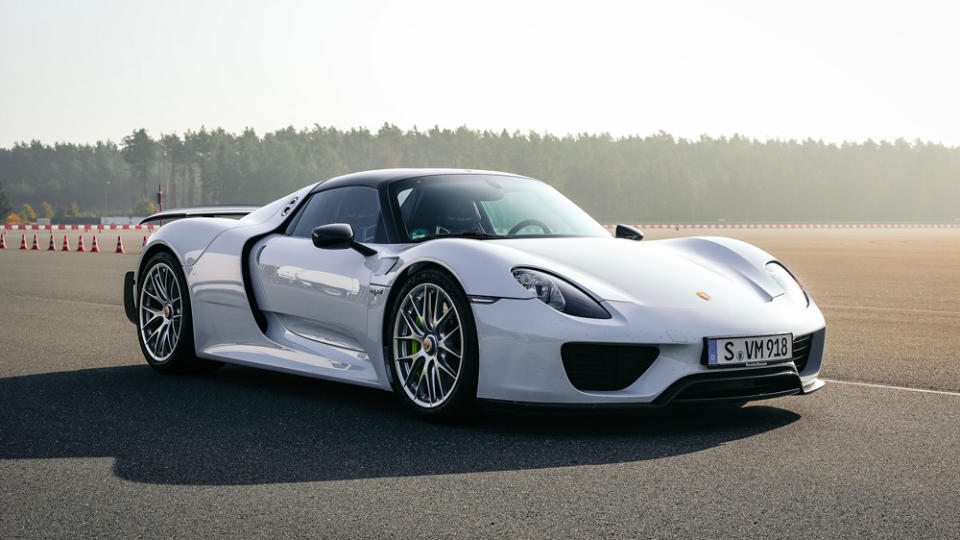
Courtesy of Porsche AG.
Porsche did some light sandbagging when it claimed the top speed on its 918 model was 214 mph. In 2018, one 918 Spyder was recorded clocking 218.4 mph. Still the fastest production car the Stuttgart marque has produced, the hybrid power train features a naturally aspirated 4.6-liter V-8, good for 599 hp, and twin electric motors that contribute another 282 hp, bringing the sum to 875 hp and a stupendous 944 ft lbs of torque. SE
Aston Martin One-77 — 220 MPH
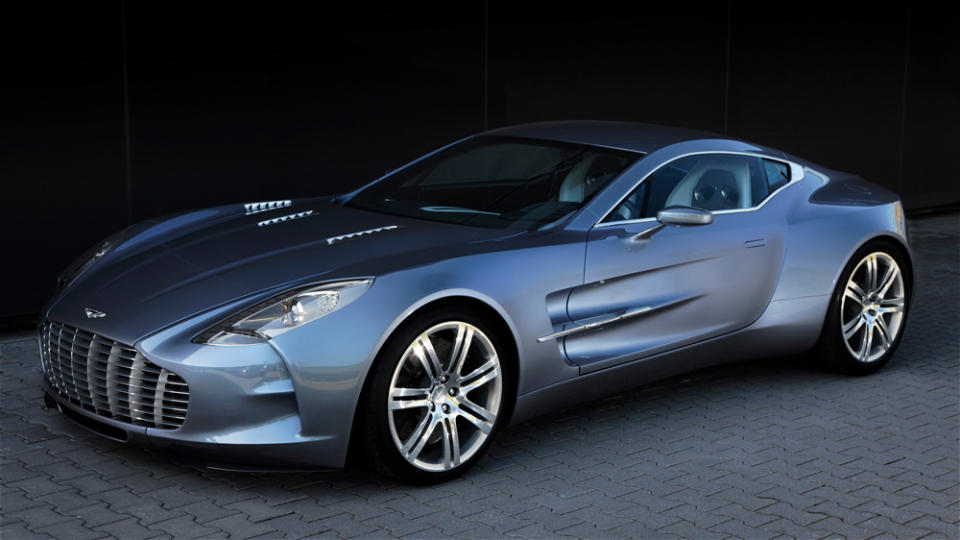
Courtesy of Aston Martin Lagonda Global Holdings PLC.
This limited-edition coupe from Aston Martin was capped at 77 units, though after an accident in Asia, only 76 examples remain. Beneath the long hood lies a 7.3-liter V-12 from Cosworth, good for 750 hp and 553 ft lbs of twist. That propels the aluminum-and-carbon-fiber chassis from a dead stop to 60 mph in 3.5 seconds. A series of tests by Aston showed that its steed was capable of 220 mph back in 2009. SE
Lamborghini Aventador LP 780-4 Ultimae—221 MPH
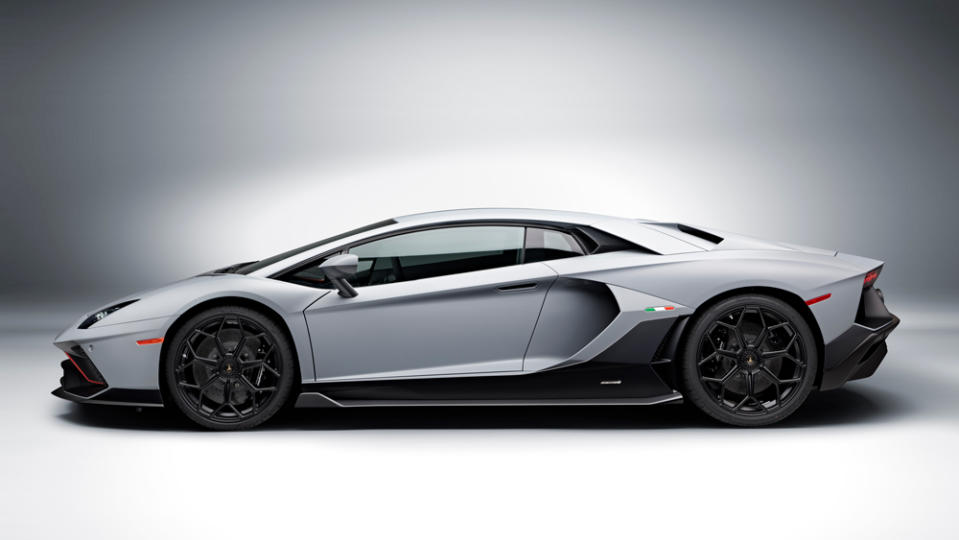
Diego Vigarani, courtesy of Automobili Lamborghini S.p.A.
As the “Ultimae” moniker denotes, Lamborghini’s latest Aventador represents the pinnacle performance variant of an impressive supercar chassis that first debuted back in 2011. The original’s naturally aspirated 6.5-liter V-12 has transformed over the years, however, and now produces up to 769 hp and 531 ft lbs of torque—as compared to the 690 hp and 509 ft lbs of torque from the LP 700-4 of 2011. With a more subtle exterior (at least for Lamborghini) that eschews much of the aggressive aerodynamics seen on the more track-focused SVJ, the Ultimae also retains all-wheel drive and an incredibly outdated single-clutch automated seven-speed transmission. That said, it still manages a zero-to-60 mph time of 2.8 seconds on the way to a 221 mph top speed. The supercapacitor-hybrid Sian pumps out more power overall and Lamborghini has announced further plans to transition quickly toward fully electric supercars, but the Ultimae will reign as the most powerful, purely internal-combustion Aventador ever built. In 2023, the next generation of Raging Bulls should debut with an all-new V-12 complemented by electric motors.
Michael Van Runkle
Gordon Murray Automotive T.50—230 MPH (Claimed)
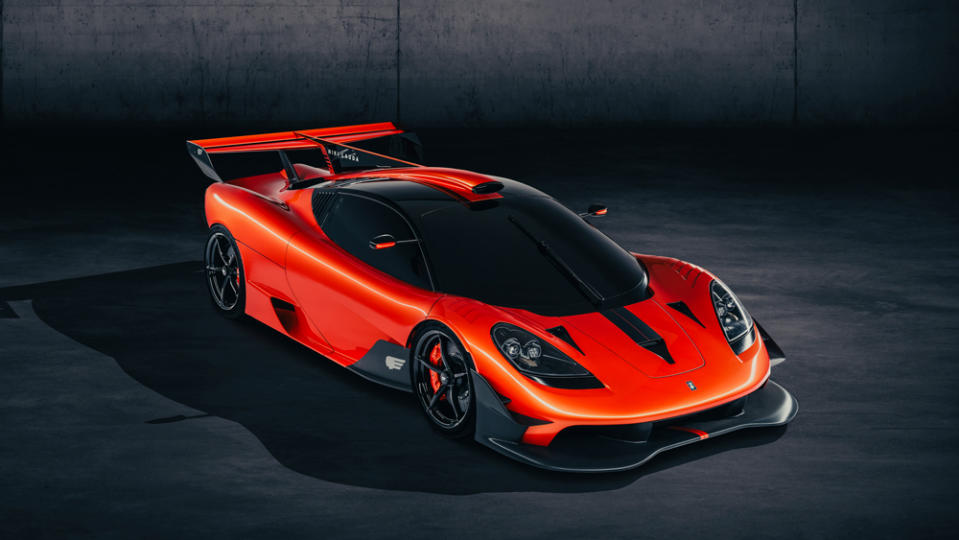
Dean Smith, courtesy of Gordon Murray Automotive.
Gordon Murray served as designer of the McLaren F1, which set new standards for performance with a world-beating top-speed run of 240.1 mph in 1998. This was thanks to the BMW-sourced V-12 and advanced-for-the-time carbon-fiber construction. More recently, Murray founded his own eponymous marque and penned the svelte T.50 using the same recipe of a lightweight body and a naturally aspirated 12-cylinder mill. This time around, the engine was built by Cosworth to displace 4.0 liters and produce 654 hp and 344 ft lbs of torque on the way to a screaming redline of 12,100 rpm. Murray claims the T.50 can hit a top speed of 230 mph, a bit shy of the F1’s original record. But then the T.50 has a lower-displacement power plant, a curb weight of only 2,174 pounds and significant improvements in downforce made possible by a 15.7-inch fan that effectively sucks the chassis toward the ground. MVR
Pagani Huayra — 238 MPH
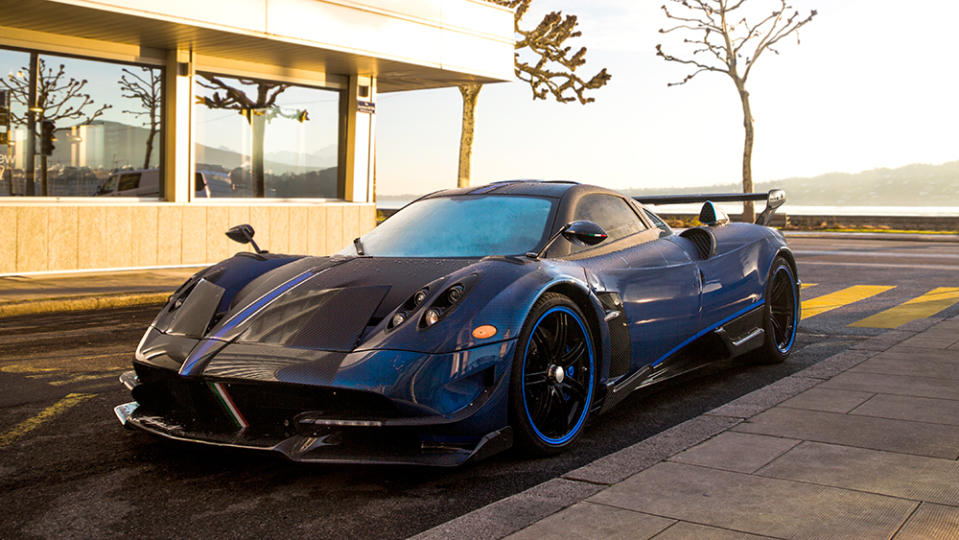
Shutterstock
The successor to the game-changing Zonda, the Huayra comes from Italian speed master Horacio Pagani and is named after Huayra-tata, a Quechua wind god. Fitting, considering the 720 hp coming from a twin-turbocharged Mercedes-AMG V-12. A seven-speed single-clutch gearbox puts down the power while delivering chunky, whiplash-inducing shifts, allowing you to scream from zero to 60 mph in a mere 2.8 seconds. SE
Pagani Huayra BC Roadster — 240 MPH (Estimated)
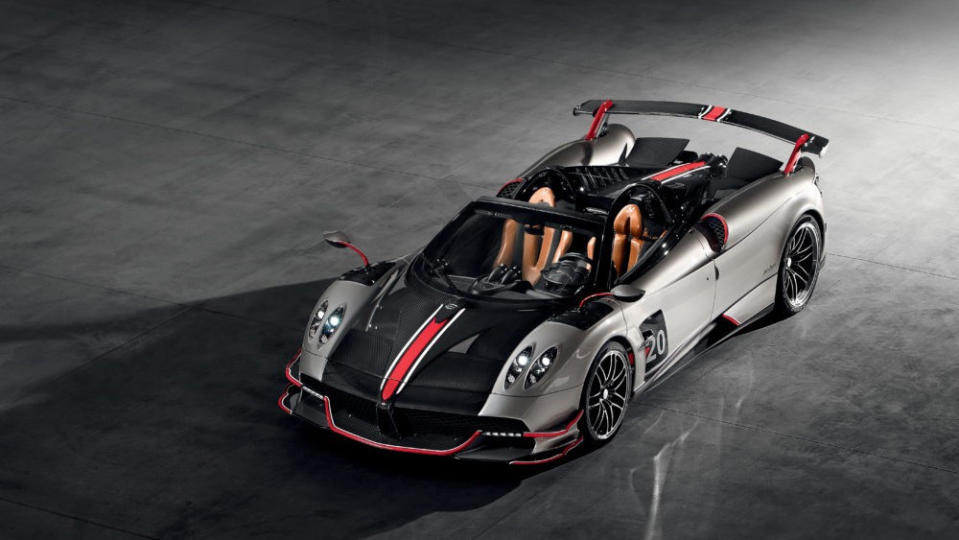
Courtesy of Pagani Automobili S.p.A.
The “BC” in the moniker of this entry is an homage to Benny Caiola, an Italian-born businessman who became a New York real estate titan. Caiola bought the first Zonda off Horatio Pagani himself, subsequently becoming a dear friend. This iteration of the open-top Huayra launched in 2019, after Pagani left the Geneva International Motor Show with five unsolicited deposits for a more aggressive version of the Huayra Roadster. The resulting machine features a new Mercedes-AMG twin-turbo V-12, tweaked to be about seven percent more powerful than the coupe version of the BC. The 791 hp output should be more than ample to rocket the $3.5 million open-top hypercar to 240 mph. SE
McLaren F1 — 240.1 MPH
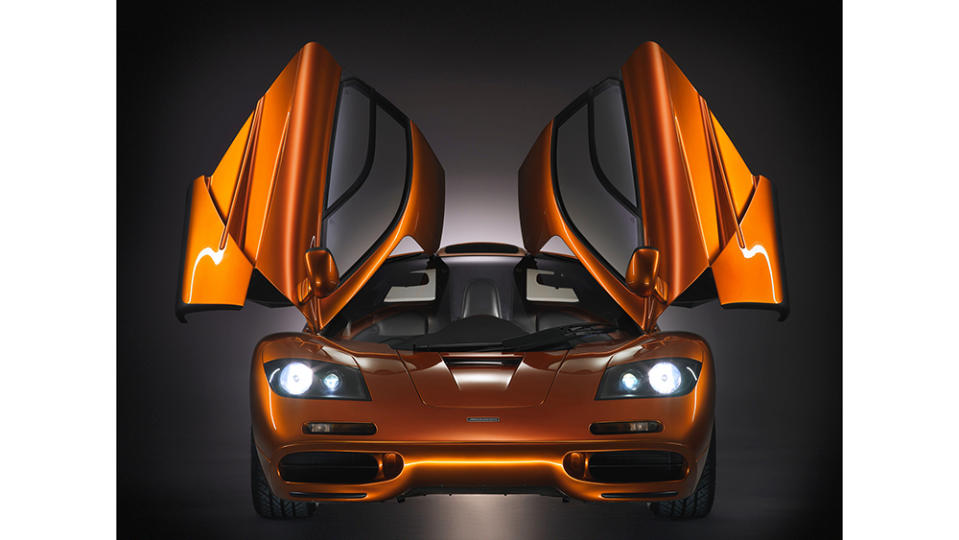
Photo: Courtesy of McLaren
The iconic three-seater from McLaren was a revolutionary model from the brilliant mind of designer Gordon Murray. Built in 1993, it was the first carbon-fiber-bodied production car ever built, and featured a 6.1-liter V-12 from BMW that was good for 618 hp and 479 ft lbs of torque. For the then-expensive, now-bargain price of £500,000, you were rewarded with blistering speed: zero to 60 mph in 3.2 seconds and zero to 100 mph required just 6.3 seconds. Simply mental performance figures, especially when you factor in that the engine is naturally aspirated. When it officially set the world speed record back in 1998, the 240.1 mph run remained top dog until 2005, when the Koenigsegg CCR bested it by all of 1 mph. SE
Saleen S7 Twin Turbo — 248 MPH
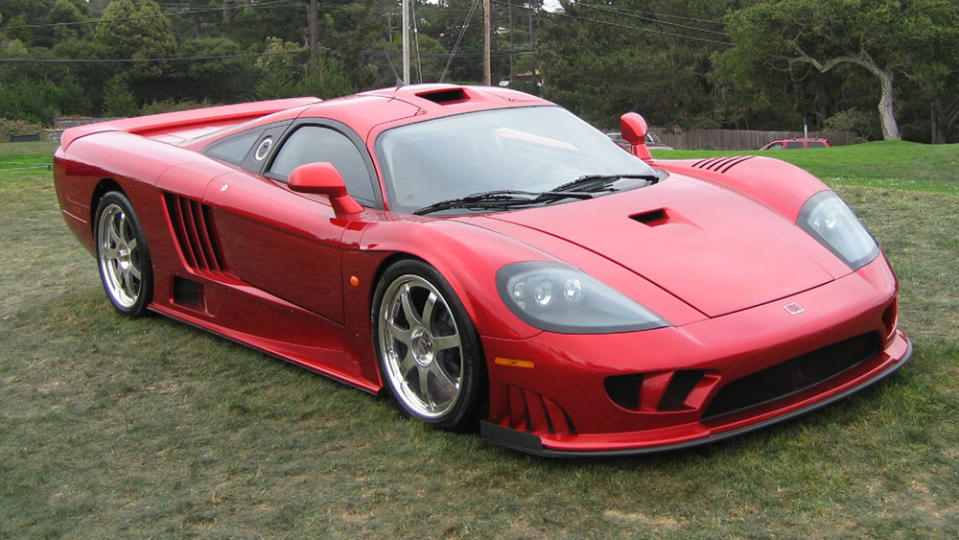
Simon Davison/Flickr.
Steve Saleen set out to build a Bugatti Veyron challenger, and this street-legal race car was the result. One of the first American mid-engined performance machines ever crafted, the Saleen S7 was 100 percent hand-built. A heavily-tweaked 7.0-liter twin-turbo Ford 351 Windsor Small Block gets bored and stroked, bestowing the handsome coupe with 750 hp. SE
Koenigsegg CCXR — 249 MPH
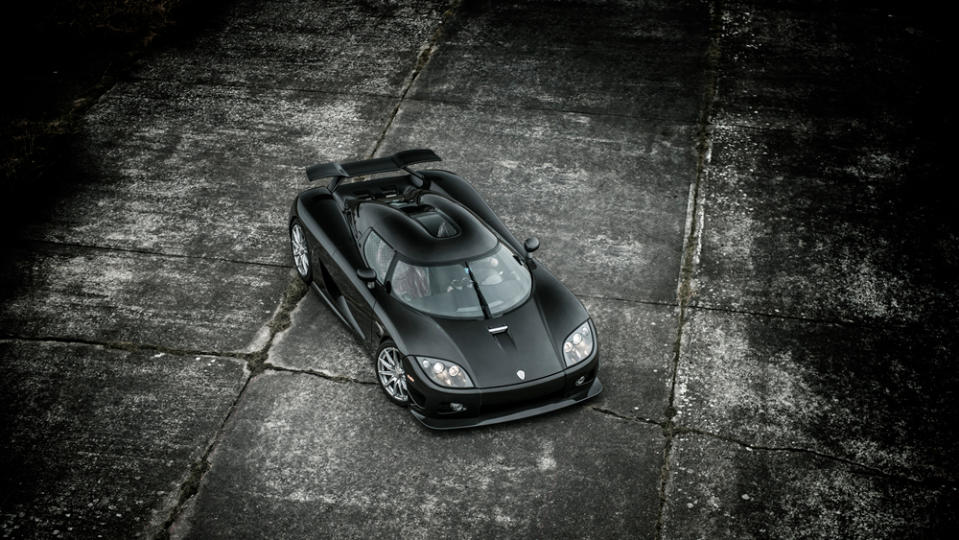
Courtesy of Koenigsegg Automotive AB.
The CCXR uses the same 4.7-liter twin-turbo V-8 mill as the CCX, but the Swedish company modded the power plant to run on E85 race gas, which shot the power from 795 hp up into the four-figure range—1,004 hp to be exact. Given the CCXR’s upgraded aerodynamics package and engine, it would be interesting to see how it performs in a proper top-speed run that’s in a straight line and not on a circular track (which is how the aforementioned CCR ran). SE
Koenigsegg Gemera — 249 MPH (Claimed)
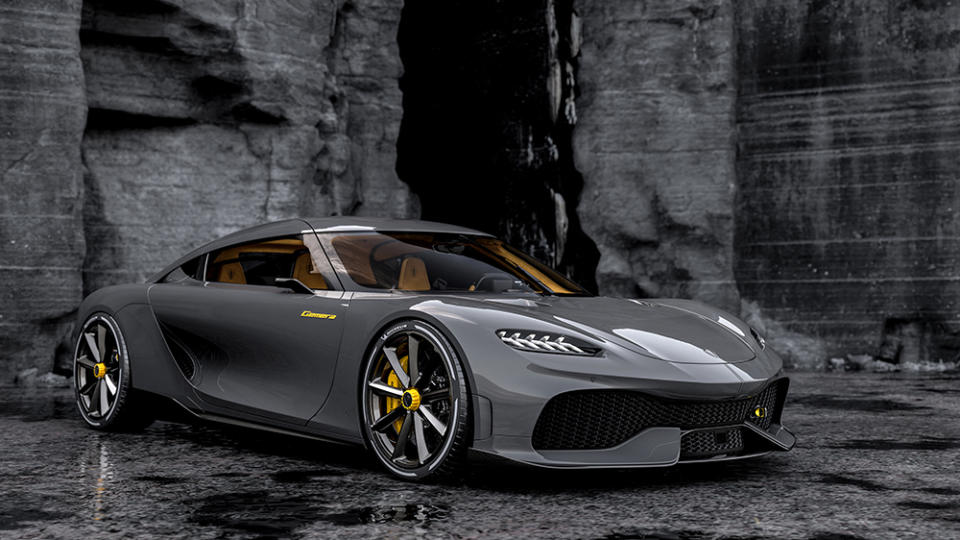
Courtesy of Koenigsegg Automotive AB.
The second hypercar from the Swedish automotive wizards to grace our list is referred to as a “mega GT” by founder Christian von Koenigsegg. That’s because it’s packing 1,700 hp, 2,581 ft lbs of torque and has four seats, each of which was designed to hold an actual human. (Thoughtfully, there’s room for the storage of one carry-on suitcase per passenger.) The sprint to 60 mph is over in 1.9 seconds—faster than you can read this sentence. SE
Tesla Roadster — 250+ MPH (Claimed)
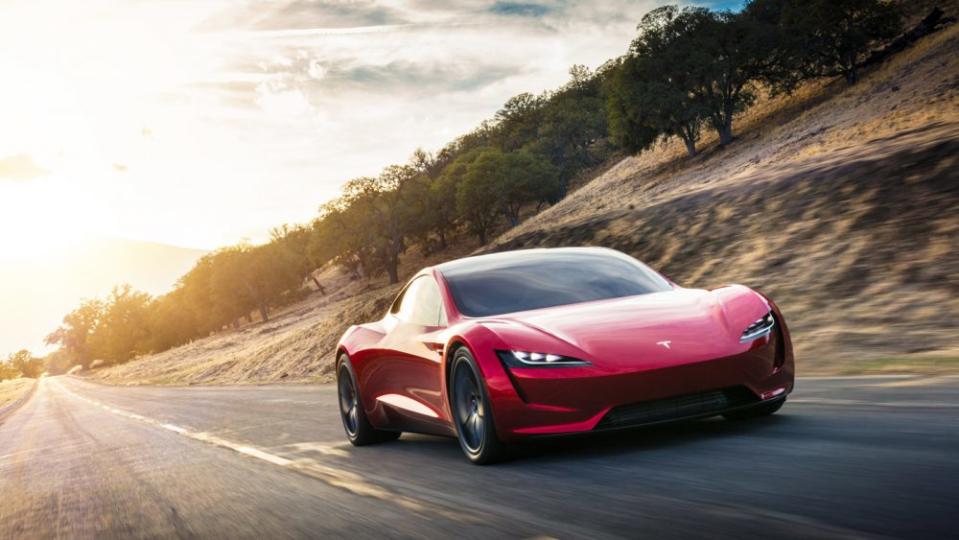
Photo: Courtesy Tesla.
Elon Musk launched Tesla with a coupe, so this electric Roadster is a fitting return to his roots. Only he’s turned everything up to 11. Tesla claims its 200 kWh battery pack will provide up to 620 miles of range, while a trio of motors will propel the $200,000-plus four-seat supercar to 60 mph in 1.9 seconds. With that quickness, the quarter-mile is in your rearview in just 8.8 seconds. SE
Aston Martin Valkyrie — 250 MPH (Claimed)
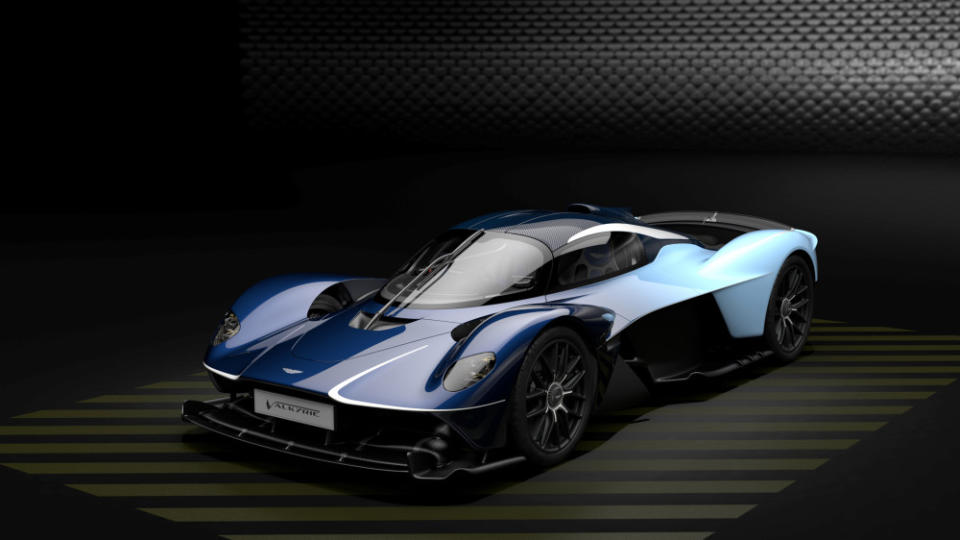
Courtesy of Aston Martin Lagonda Global Holdings PLC.
When engineers from Aston Martin and Red Bull Racing put their heads together, the world benefits. The Valkyrie, or AM-RB 001 as it was known in development, is a fantastically wild-looking hypercar. Behind your seat, a 6.5-liter Cosworth V-12 churns out 1,160 hp, more than enough to compress your innards during the 2.3 seconds it takes to hammer to 60 mph. And it has recently been spotted road-testing. SE
McLaren Speedtail — 250 MPH
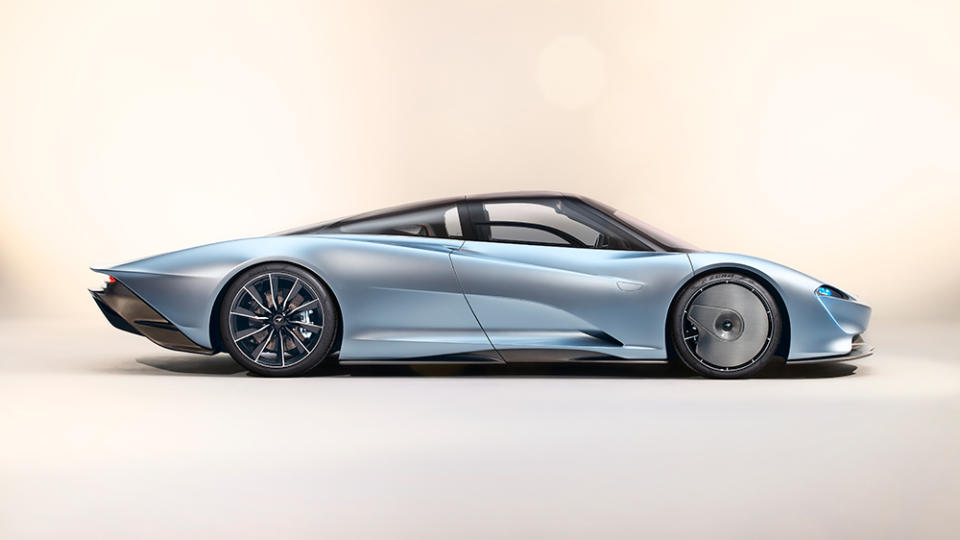
Courtesy of McLaren Automotive Limited.
The rear-wheel drive Speedtail employs a hybrid system good for 1,035 hp, and its sleek shape and lightweight carbon-fiber construction is tailor-made for its top speed of 250 mph. McLaren claims it’ll take only 12.8 seconds to go from a dead stop to 186 mph, which is an eye-watering stat. SE
Czinger 21C V Max—253 MPH (Claimed)
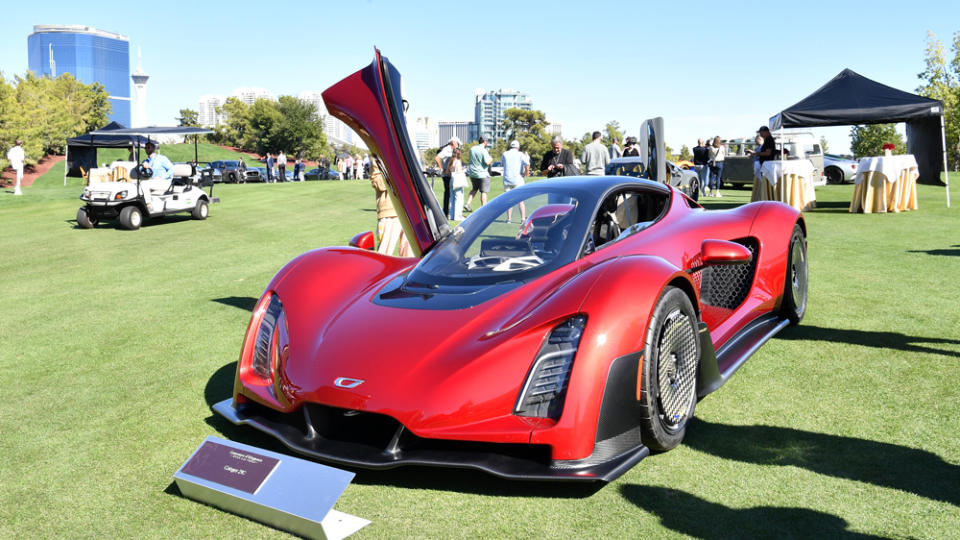
Denise Truscello/Getty Images for Wynn Las Vegas
American hypercar start-up Czinger Vehicles aims to completely revolutionize the automotive industry by introducing the sustainable use of 3-D-printing and AI-assisted designs in mass production. Along the way to mainstream adoption, Czinger plans to produce world-beating hypercars starting with the 21C, a unique 1+1 that already set lap records at WeatherTech Raceway Laguna Seca and Circuit of the Americas on road-legal Michelin Pilot Sport Cup 2R tires.
At Monterey Car Week, in August of 2022, Czinger then revealed a smoother and longer aerodynamic body for the 21C, dubbed the V Max, which reduces drag while using the same twin-turbocharged 2.88-liter V-8 paired with dual electric motors. The combination delivers a total 1,250 hp to all four wheels. Despite a low dry weight of 2,756 pounds, Czinger claims the V Max should be able to sprint to 60 miles per hour in under 1.9 seconds and achieve a top speed of 253 mph. MVR
SSC Ultimate Aero TT— 256.1 MPH
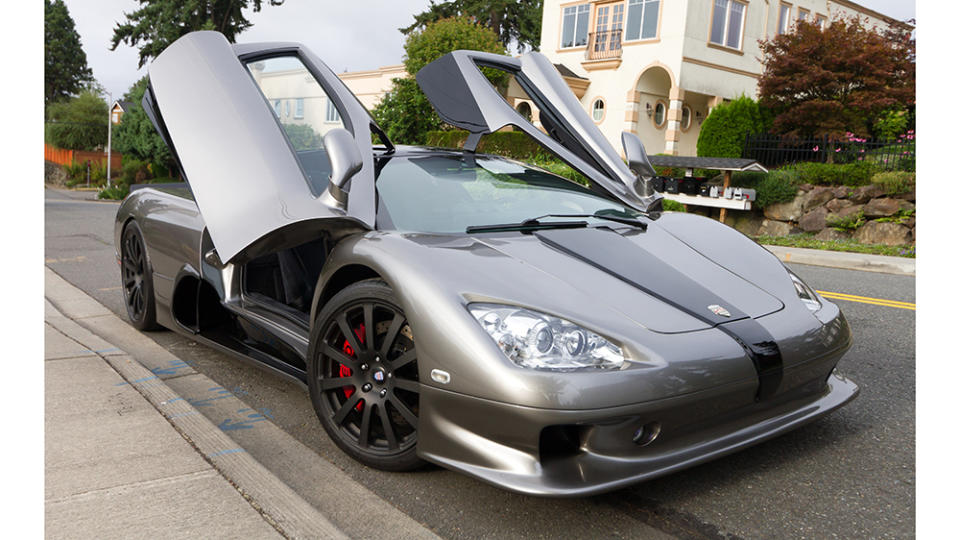
Courtesy of Wikipedia.
SSC North America’s 2007 Ultimate Aero TT has a Guinness Book of Records–verified top speed of 256.18 mph. That record has since been broken by others, and now belongs to its successor, the SSC Tuatara. But that doesn’t take anything away from this fully carbon-fiber behemoth. Power comes from a twin-turbocharged Corvette C5R V-8 that’s tuned to produce more than 1,100 hp and 1,094 ft lbs of torque. The rip to 60 mph is 2.7 seconds, and the task of stopping the land missile is aided by twin air brakes that pop up from the rear wings. SE
Rimac Nevera—258 MPH
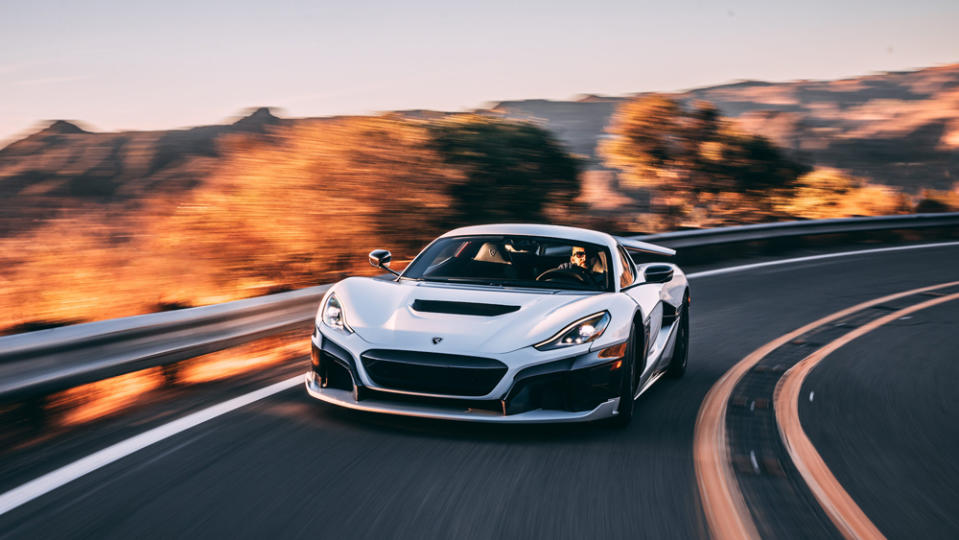
Rimac Automobili
With twice the power of a Formula 1 car, the ability to hit 60 mph in under two seconds and a $2.4 million sticker price, the new Rimac Nevera should intimidate even an experienced hypercar owner. Yet the automaker’s 33-year-old founder, Mate Rimac, intended his masterpiece to be a highly usable, no-fuss grand tourer. So which is it—Hyde or Jekyll? The answer from behind the wheel, amazingly, is both.
The 1,914 hp Nevera is currently the world’s fastest-accelerating production car. And at full steam, the Nevera is far from the stereotype of a silent EV, with 1.4 megawatts actually screaming through the car. The noise adds to the drama, as much psychological as physical, in a way no other road car can match, making for a dangerously charismatic split personality worth every one of its seven figures. Ben Oliver
Bugatti Mistral—261 MPH (claimed, with the roof off)
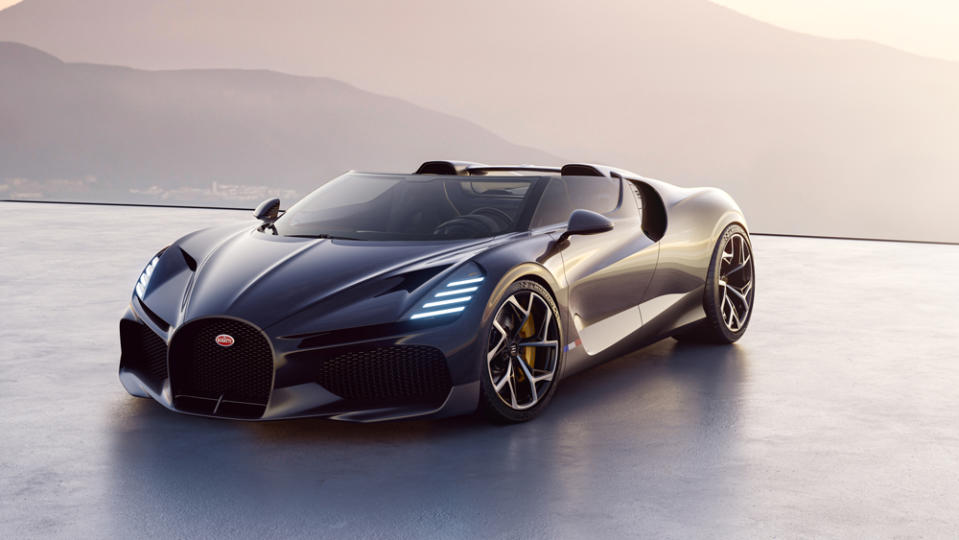
Bugatti Rimac
Just about any Bugatti will make the cut among the world’s fastest production cars, if simply because the quad-turbo W-16 engine, first pioneered by the Veyron, established an entirely new era of four-figure horsepower output back in 2005. The Veyron managed a 253 mph top speed then and Bugatti consistently upped that number through 2019, when the Chiron Super Sport 300+ managed a 304.7 mph single-direction run. But the Veyron, Chiron, Bolide, and others were all coupes—now, new for 2022, Bugatti plans to take a new world record home to Molsheim with the Mistral roadster, which features a final application of the quad-turbo W16 before a partnership with Rimac results in hybridization and electrification. More importantly, the Mistral required significant revisions to Bugatti’s established design language to create sufficient downforce and engine cooling to allow for an incredible top speed of 261 miles per hour. And that’s a figure that the Mistral will somehow achieve with the roof off. MVR
Bugatti Veyron Super Sport — 267.8 MPH
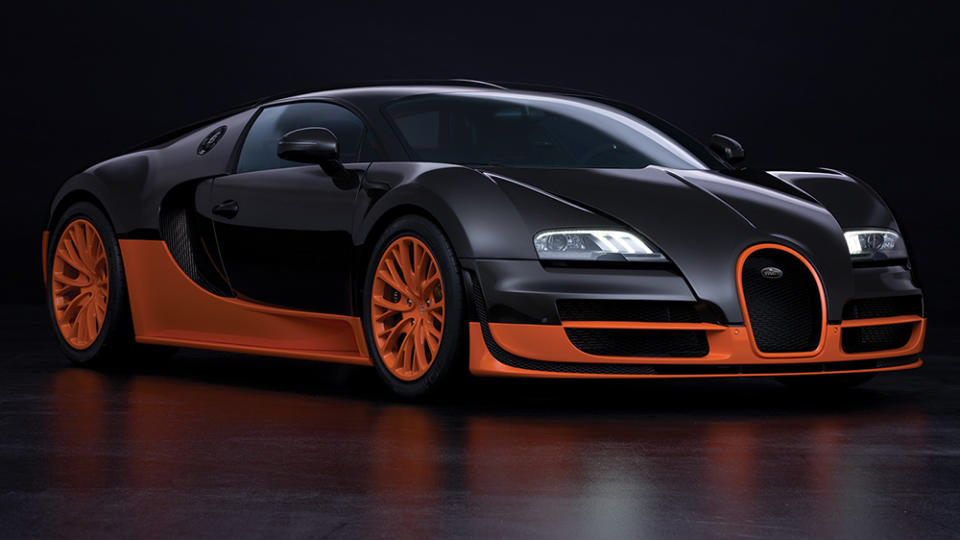
Courtesy of Bugatti Automobiles S.A.S.
Here’s yet another Bugatti, this one built back in 2010 for the sole purpose of securing the accolade of fastest production car ever built. And the Veyron Super Sport achieved it, per Guinness. From the same W-12 power plant, engineers managed to eke out an additional 180 hp, bringing the grand total to 1,184 hp. To unlock the potential for max speed, you’ll need a second key that’ll give unfettered access to the engine. SE
Hennessey Venom GT — 270.4 MPH
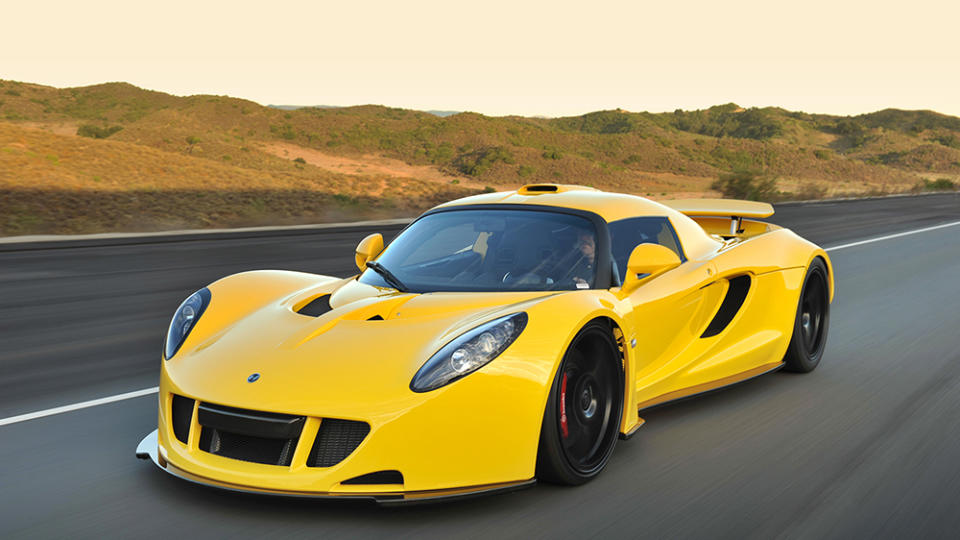
Courtesy of Hennessey Performance Engineering.
John Hennessey’s eponymously-named performance group is obsessed with power and speed, evidenced by shoehorning as much oomph as it can into production cars from other manufacturers. Then Hennessey built his own supercar in 2014, powered by a 7.0-liter twin-turbo GM V-8 packing 1,244 hp and 1,287 ft lbs of torque. The Venom reached 270.4 mph at the Kennedy Space Center’s 3.2-mile landing strip, but only in one direction. Since both directions are required for a record-holding run, in addition to a production volume of 30 or more cars (only 13 Venoms have been sold), the Hennessey doesn’t qualify for official record books. But still, the beast has surpassed 270 mph, and that’s impressive as hell. SE
Koenigsegg Agera RS — 277.8 MPH
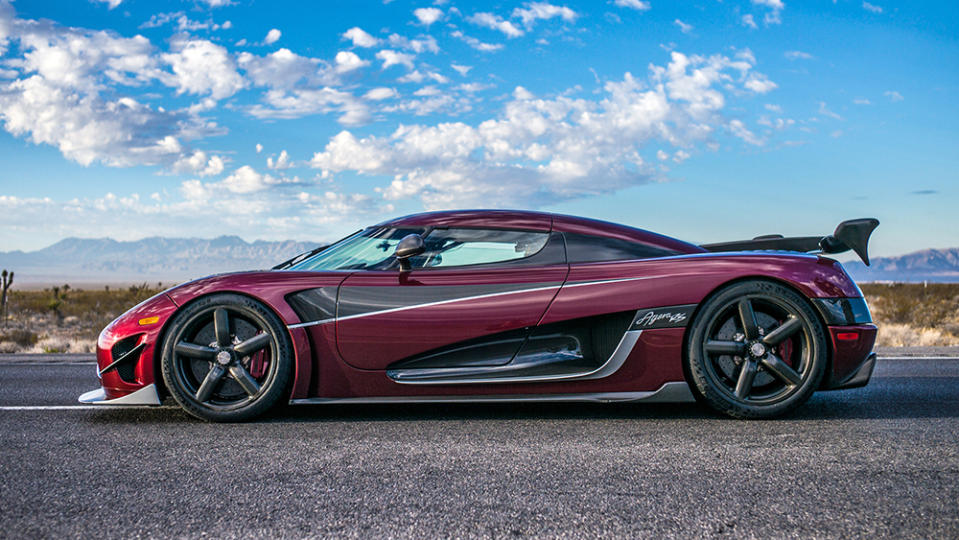
Courtesy of Koenigsegg Automotive AB.
In November of 2017, a Koenigsegg Agera RS, running E85 fuel (meaning it was getting 1,360 hp), was driven by a factory driver to a two-way average speed of 277.8 mph on an 11-mile strip of closed road in Nevada. The car, owned by a customer who suggested the feat, actually hit 284.5 mph during the record attempt, which is staggering. At the time, it also nabbed the fastest zero-to-250 mph-to-zero metric (33.2 seconds), the highest average speed during the flying kilometer (268 mph) and for the flying mile on a public road (276.3 mph). SE
Koenigsegg Jesko—278 MPH (Claimed)
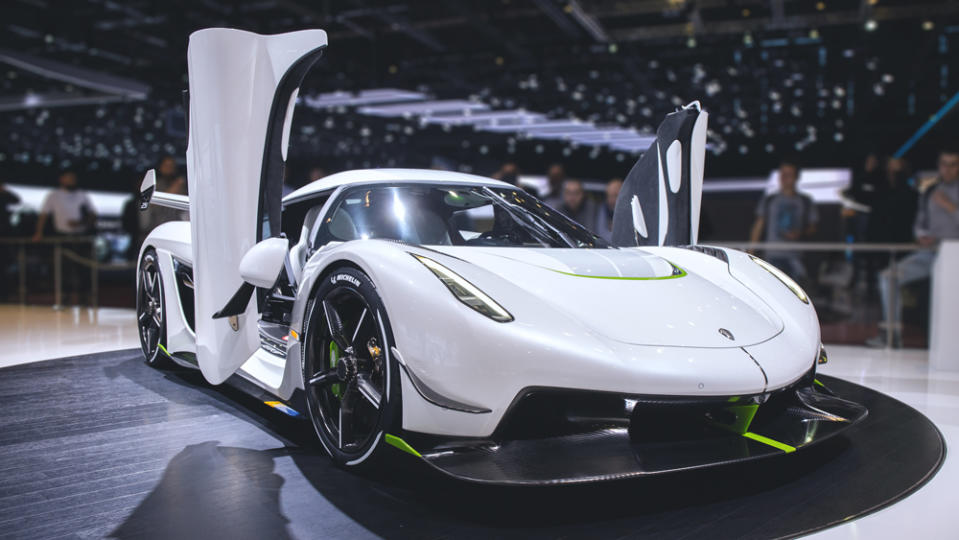
Martyn Lucy/Getty Images
Until the promised Jesko Absolut model achieves its projected top speed of more than 310 mph, please draw your attention to the standard-issue Jesko, which is anything but a standard supercar. Propelled by a 5.0-liter twin-turbo V-8, the Swedish manufacturer’s engine is mated to a novel Light Speed gearbox that can handle its prodigious output, which can reach 1,600 hp when running on E85 biofuel. Even more remarkable about this wild ride are its aerodynamics, which in the (even more) limited production Jesko Attack model produce more than 3,000 pounds of downforce. Although all 125 examples of the Jesko are currently sold out, we anticipate the standard model should be able to achieve (and likely exceed) Christian von Koenigsegg’s current projected top speed for it, which is 278 mph. Basem Wasef
SSC Tuatara — 295 MPH
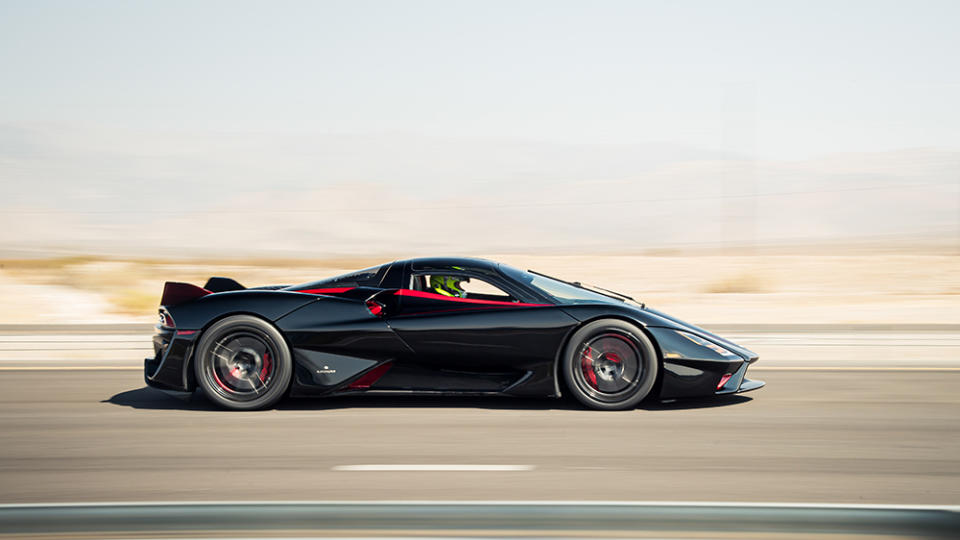
Courtesy of SSC North America.
In October of 2020, SSC North America’s founder Jerod Shelby took his latest hypercar to a Nevada desert and hammered out a run that was touted to have averaged 316.11 mph. The internet, however, was skeptical, and shredded that session’s data in short order, negating it. In January of 2021, Shelby decamped to proving grounds at Kennedy Space Center for a redux, bringing ample recording devices and external groups to monitor. That trial resulted in a 279.2 mph speed on a northbound run, followed by the car reaching 286.1 mph on a southbound pass. Those (certified) results average to 282.9 mph, which is more than enough to notch the SSC Tuatara above the Koenigsegg Agera RS on this list. SE
Hennessey Venom F5 — 300+ MPH (Claimed)
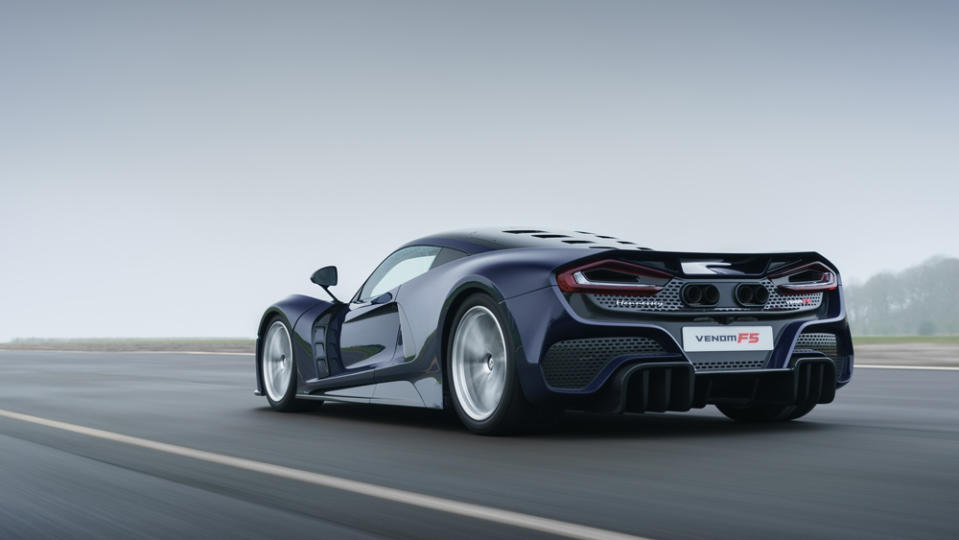
Dean Smith, courtesy of Hennessey Performance Engineering.
Hennessey Performance Engineering’s Venom F5 picks up the baton from its older sibling and rockets away. A 6.6-liter twin-turbo V-8 pumps out 1,817 hp and 1,193 ft lbs of twist, which propels the 2,950-pound coupe to 60 mph in under two seconds. And in case you were wondering, its name is an homage to the F5 category of tornados, the most intense level possible on the Fujita scale. SE
Bugatti Bolide—311 MPH (Claimed)

Bugatti Rimac
Inspired by the Molsheim manufacturer’s Vision Le Mans concept, Bugatti’s Bolide combines its fantastical X-themed design language with the brand’s unprecedented W-16 power plant to yield an estimated top speed in excess of 311 mph. Bolstered by a lightweight monocoque incorporating titanium and carbon fiber, the Bolide presents a sci-fi aesthetic that complements what are hyped to be otherworldly performance figures. Those specs are promised to include a zero-to-60 mph time of less than 2 seconds. BW
Bugatti Chiron Super Sport — 304.7 MPH
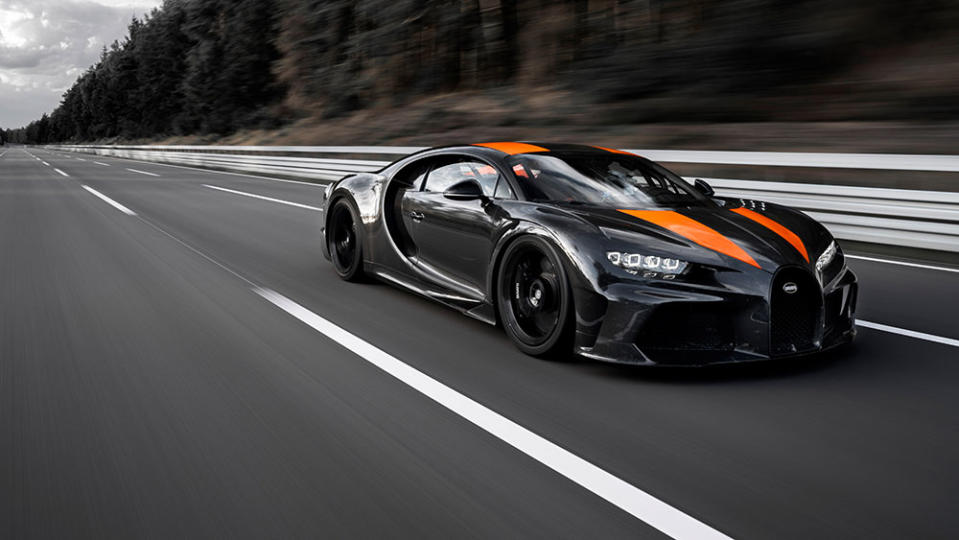
Courtesy of Bugatti Automobiles S.A.S.
The top spot for the world’s fastest supercar goes to Bugatti. In 2019, pilot Andy Wallace railed a tweaked-version of the 1,600 hp, 8.0-liter quad-turbocharged Chiron Super Sport around the Ehra-Lessien track. The modifications included lengthening the body by 10 inches, lowering it and giving it a new rear aero kit, as well as a new exhaust setup. The real heroes, however, were the Michelin Pilot Sport Cup 2 tires that were x-rayed before fitment to ensure perfect structural integrity. Watch the Chiron hit 304 mph below. SE
Best of Robb Report
The Chevy C8 Corvette: Everything We Know About the Powerful Mid-Engine Beast
The 15 Best Travel Trailers for Every Kind of Road-Trip Adventure
Sign up for Robb Report's Newsletter. For the latest news, follow us on Facebook, Twitter, and Instagram.

